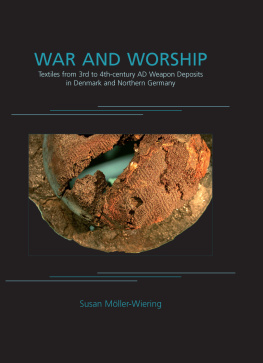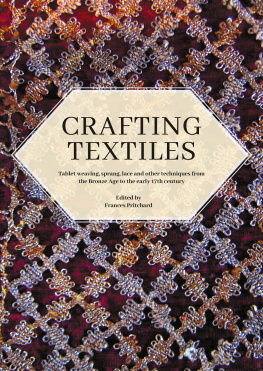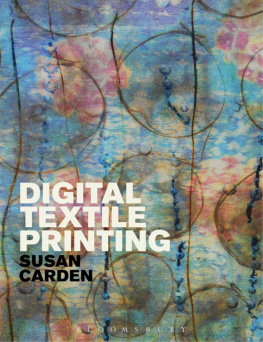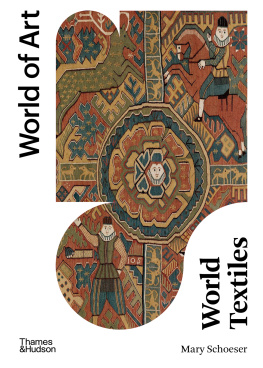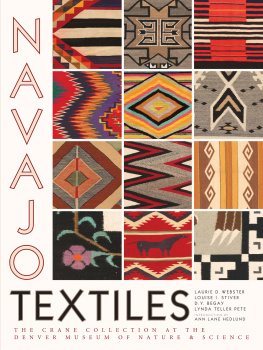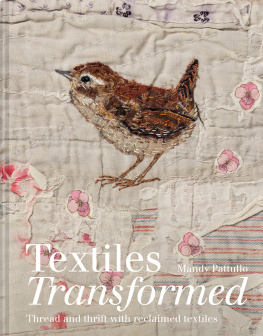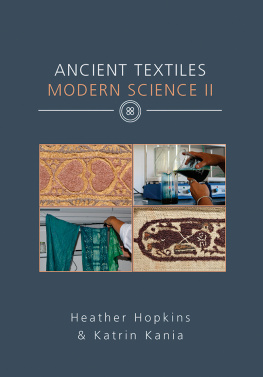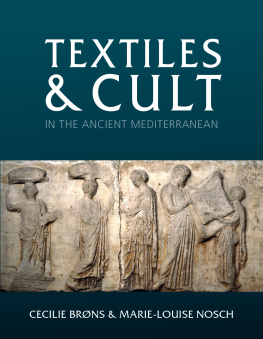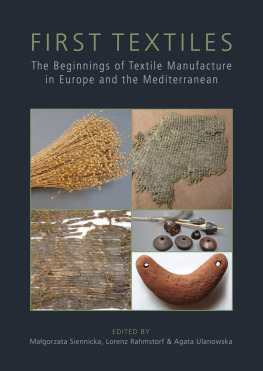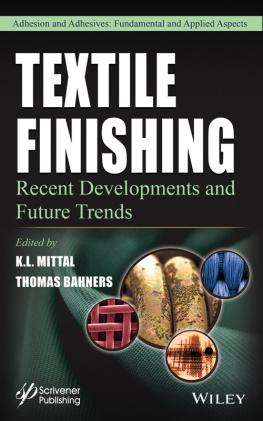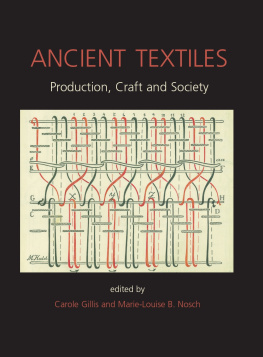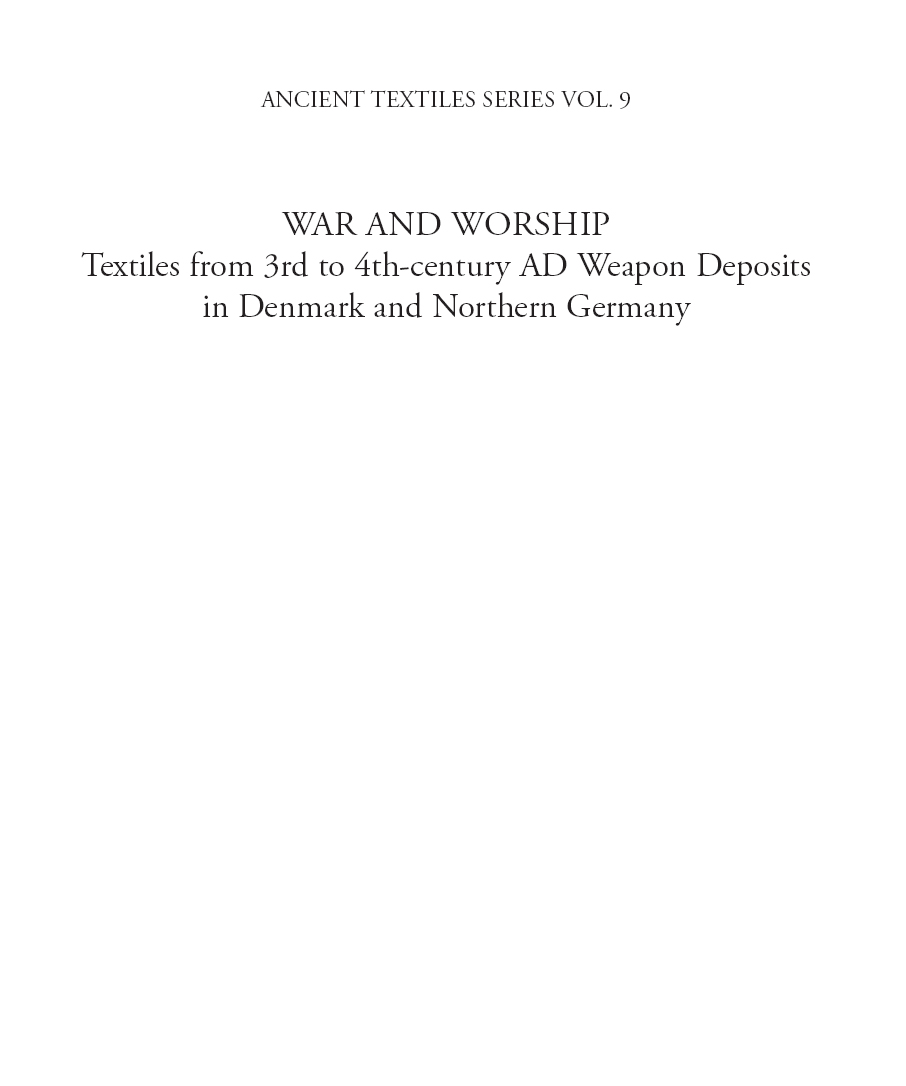Published by
oxbow Books, oxford, UK
oxbow Books and the individual authors, 2011 ISBN 978-1-84217-428-9
This book is available direct from
oxbow Books, oxford, UK
(phone: 01865-241249; Fax: 01865-794449)
and
The david Brown Book company
PO Box 511, Oakville, CT 06779,
USA (Phone: 860-945-9329; Fax: 860-945-9468)
or from our website
www.oxbowbooks.com
A CIP record is available for this book from the British Library
Library of Congress Cataloging-in-Publication Data
Mller-Wiering, Susan.
War and worship : textiles from 3rd to 4th-century ad weapon deposits in Denmark and northern Germany / Susan Mller-Wiering.
p. cm. -- (Ancient textiles series vol. 9) Includes bibliographical references.
ISBN 978-1-84217-428-9
1. Thorsberg Site (Germany) 2. Textile fabrics, Ancient--Schleswig (Germany and Denmark) 3. Water-saturated sites (Archaeology)--Schleswig (Germany and Denmark) 4. Excavations (Archaeology)--Schleswig (Germany and Denmark) 5. Schleswig (Germany and Denmark)--Antiquities. I. Title.
NK8907.3.M65 2011 677.00943'512--dc22
2011011462
Front cover: Shield boss XFN from Illerup daly with two layers of different textiles. Photo: Susan Mller-Wiering.
Back cover: Drawing by Catrin Ueker. Susan Mller-Wiering.
Ancient Textiles Series Editorial Commitee:
Eva Andersson Strand, Margarita Gleba, Ulla Mannering
and Marie-Louise Nosch
Printed in Great Britain by
Short Run Press, Exeter
CONTENTS
Lise rder Knudsen
LIST OF FIGURES
All photos and drawings by the individual authors unless stated otherwise in captions.
LIST OF TABLES
ACKNOWLEDGEMENTS
The present study describes the results of the research project Textiles for War. It would never have been successful without the generous support of many people and institutions providing material, information, comments and, above all, financing for the entire project. I am most grateful to, in alphabetical order:
Eva Andersson Strand, Centre for Textile Research, Copenhagen, Denmark
Archologisches Landesmuseum Schloss Gottorf, Stiftung Schleswig-Holsteinische Landesmuseen, Schleswig, Germany
Marie-Louise Bech Nosch, Centre for Textile Research, Copenhagen, Denmark
Lise Bender Jrgensen, Norges Teknisk-Naturvitenskapelige Universitet, Trondheim, Norway
Ruth Blankenfeldt, Archologisches Landesmuseum Schloss Gottorf, Schleswig, Germany
Marianne Bloch Hansen, Centre for Textile Research, Copenhagen, Denmark
Carlsberg Foundation, Copenhagen, Denmark
Centre for Textile Research, The Danish National Research Foundation's Centre for Textile Research, University of Copenhagen, Denmark
Claus von Carnap-Bornheim, Archologisches Landesmuseum Schloss Gottorf, Schleswig, Germany
Martin Ciszuk, Hgskolan i Bors, Bors, Sweden
Joanne Cutler, Institute of Archaeology, University College, London, United Kingdom
DressID, a project financed by the EU
Carol van Driel-Murray, University of Amsterdam, Amsterdam, The Netherlands
Forskningsrdet for Kultur og Kommunikation, Forsknings- og Innovationsstyrelsen, Copenhagen, Denmark
Roberto Fortuna, Nationalmuseet, Copenhagen, Denmark
Karin Frei, Centre for Textile Research, Copenhagen, Denmark
Margarita Gleba, Centre for Textile Research, Copenhagen, Denmark
Karin Gbel, Archologisches Landesmuseum Schloss Gottorf, Schleswig, Germany
Lena Hammarlund, Hgskolan i Bors, Bors, Sweden
Jrgen ilkjr, Moesgrd Museum, Moesgrd, Denmark
Iron Age in Northern Europe, a project financed by the Carlsberg Foundation
Nina Lau, Archologisches Landesmuseum Schloss Gottorf, Schleswig, Germany
Ulla Mannering, Centre for Textile Research, Copenhagen, Denmark
Vibe Maria Martens, Centre for Textile Research, Copenhagen, Denmark
Suzana Matei, Archologisches Landesmuseum Schloss Gottorf, Schleswig, Germany
Moesgrd Museum, Moesgrd, Denmark
Cherine Munkholt, Centre for Textile Research, Copenhagen, Denmark
Nationalmuseet, The National Museum of Denmark, Copenhagen, Denmark
Anna nrgaard, Vikingeskibsmuseet, Roskilde, Denmark
Xenia Pauli Jensen, Nationalmuseet, Copenhagen, Denmark
Lise rder Knudsen, Center for Bevaring af Kulturarven, Vejle, Denmark
Andreas Rau, Archologisches Landesmuseum Schloss Gottorf, Schleswig, Germany
Flemming Rieck, Vikingeskibsmuseet, Roskilde, Denmark
Irene Skals, Nationalmuseet, Copenhagen, Denmark
Julian Subbert, Universitt Hamburg, Germany
Ingrid Ulbricht, Archologisches Landesmuseum Schloss Gottorf, Schleswig, Germany Jrgen Wiering, punctum saliens, Rendsburg, Germany
Gabriele Zink, Archologisches Landesmuseum Schloss Gottorf, Schleswig, Germany
GLOSSARY
The glossary encompasses textile-related terms mentioned in chapters 1, 7 and 8.
2/2 twill: see twill.
Balanced: the thread count of the warp is rather similar to that of the weft, e.g. 18 x 14 threads per cm.
Basket weave: weaving type like tabby, but with two parallelly used threads instead of one both in warp and weft.
Braid: at least three strands of fibres or other flexible material are intertwined into a rather long, but relatively thin structure.
Breeches: here trousers reaching only to the knees (not necessarily as a riding-garment).
Broken twill: see twill.
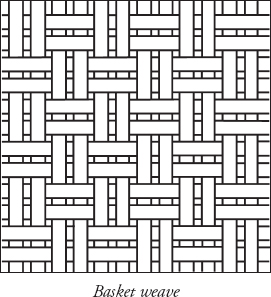
Cashmere: very fine wool of the Kashmir goat.
chevron twill: see twill.
clasp: fastening device for clothing consisting of two parts, here of hook and eye.
cloak: loose, sleeveless outer garment worn around the shoulders.
cord: here several threads twined together and used as one.
Cuff: end of a sleeve around the wrist.
Diagonal twill: see twill.
Diamond twill: see twill.
Fabric: here a woven piece of textile.
Fibre: the smallest unit in a thread and thus in a textile. Here most often a single hair.
Finishing border: border at the end or bottom of a fabric, fastening the loose warp threads by plaiting or tablet weaving? typical on fabrics woven on the warp-weighted loom.
Gold tinsel: here thread made of a gold strip wound around a core of other fibres.
Goose-eye twill: see twill.
Grain: lines or pattern visible in a fabric based on the weaving type.
Gusset: triangular insertion into e.g. a tunic in order to enlarge or widen a certain part of it.
Hair: here in general the fibres growing on the skin of animals; in particular, rather thick animal fibres while the thin ones are called wool.
Half basket weave: weaving type like tabby, but with two parallelly used threads instead of one in either warp or weft.
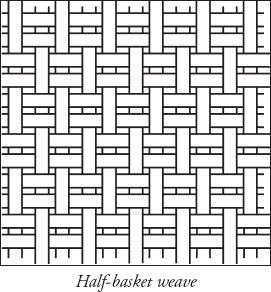
Hem: edge of a fabric fastened by folding and stitching, e.g. as the lower end of a shirt. Leg wrap: here long, broad strip of fabric

